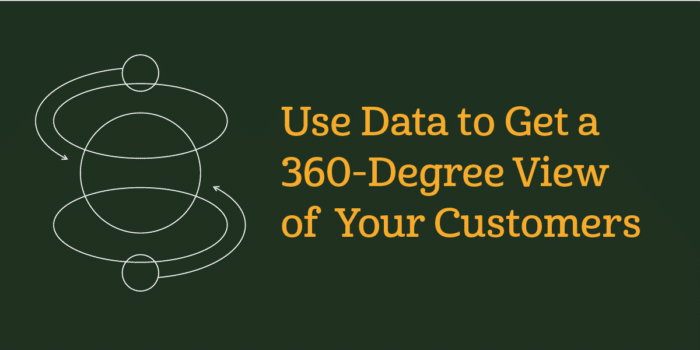
Business success often depends on discovering what your customers want, and offering it to them in a mutually beneficial way — meeting their needs and helping your company expand. The more you know about your customers, the easier it becomes to predict and meet their needs, which makes a 360-degree customer view crucial for businesses today.
A 360 view of customer data is an important part of the strategic approach to developing and maintaining healthy customer relationships.
- What Is a 360-Degree View of the Customer?
- What Is Included in a Customer 360-Degree Data Model?
- How Does a 360-Degree Customer View Benefit Your Company?
- How to Build a 360-Degree Customer View?
What Is a 360-Degree View of the Customer?
In the physical world, 360 degrees is a full circle, and having a 360-degree view means seeing everything from all angles, with no blind spots.
Get a 360-Degree View of Your Customers
A 360-degree customer view in the business world means you have a panoramic view of customer data, from basics like contact information to more in-depth information, like their interactions with your business over the years. In short, you can understand all aspects of customer relationships with your organization, and you have the bigger picture of who they are and what they need.
The process involves centralizing data from various customer touchpoints and interactions and storing it in a customer relationship management (CRM) system. Having all your customer information in one centralized hub helps businesses create the personalized experience and service today’s customers expect.
Customer 360 views contain massive data, enabling your business to craft a strategic approach that provides the best possible customer experience through personalization. Today’s data technology allows businesses to gain this detailed view of customers faster than ever, enabling you to tailor the customer experience to their unique preferences, and better predict their behaviors.
What Is Included in a Customer 360-Degree Data Model?
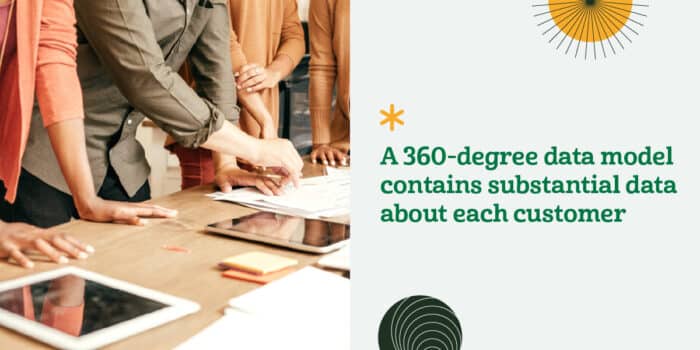
A 360-degree data model contains substantial data about each customer, as your goal is to create as complete a view as possible. It includes information about their past interactions with your organization, information about who they are, and predictions about what their behavior — as it relates to your organization — might look like in the future.
For the purposes of creating a 360-degree customer view, your data will be divided into two groups, including the following:
- Hard data: This type of data gives you facts about your customers, and comes from online accounts and transactions, among other sources. Hard data also includes customer interactions with your business, such as chats and emails.
- Soft data: Hard data can tell you plenty about what your customers are doing, but you need soft data to understand how they’re feeling. Soft data is often hidden within the hard data, and it’s invaluable in helping you understand the people behind the information for a full 360-degree view.
You can further break hard and soft data into information about the past, present and future to include the following:
Get a 360-Degree View of Your Customers
1. Past Data
The history of customer interactions with your business is an essential part of the 360 customer view. Data about the past includes event-level data, such as the following:
- Communications with your business, via email, phone calls, chatbots and other channels
- Visits to your website or uses of your app
- Marketing campaigns they see and interact with
- Products they recently viewed on your website
- Product or service purchases
Include details about all of these interactions in your records, including anything customers mention during the sales cycle or customer service calls. Depending on our business goals, there are many ways to gather past data. You may want to gather different data to augment the customer experience.
2. Present Data
Data about the present provides context into your company’s interactions with customers and includes information about each customer’s account. You should have records of the following:
- Current and recent orders
- Ongoing technical support challenges
- Unresolved customer service complaints
- Where customers are in the sales cycle and marketing funnel
You must keep track of each customer’s information. For B2C customers, this might include demographic data and information about their preferences and interests. For B2B customers, it should include data about the business, who the contact is, and their role at the organization.
3. Future Data
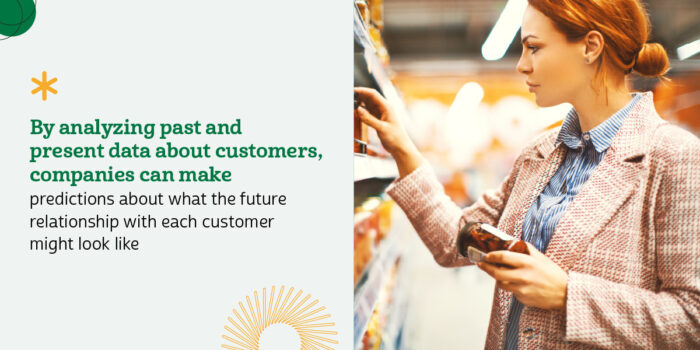
By analyzing past and present customer data, companies can make predictions about the future relationship with each customer. There’s much you can do to gather data about the future, including the following:
- Predict future purchase behaviors: Past purchase patterns and items viewed on your website or app are excellent indicators of future purchase patterns.
- Segment your customers: Use common attributes to segment your customer groups, and analyze the differences in each group’s interaction with your business. You can use these insights to predict how new customers or leads who share
Predicting future behavior is more complex than gathering past and present data, but modern analytics tools are more accurate now than in the past, making them increasingly beneficial to businesses.
To create a 360-degree model, you must collect diverse information and aggregate it into a single system to understand customers. You can leverage the data to inform your interactions with customers and drive improved results.
Benefits of 360-Degree Customer View for a Company
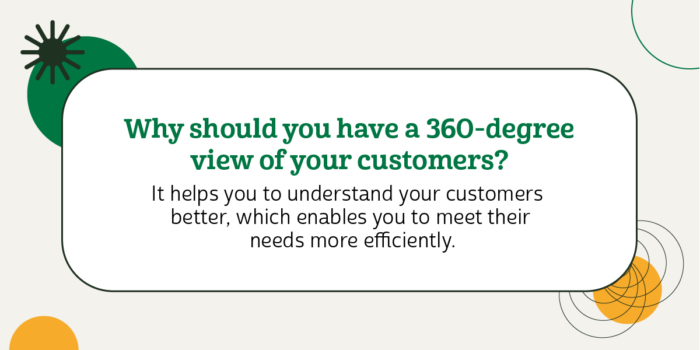
Having a 360-degree view of your customer allows you to better understand your consumers, enabling you to meet their needs more effectively. This leads to happier customers and, ultimately, business growth. Some of the benefits of a 360-degree customer view include the following:
Get a 360-Degree View of Your Customers
1. Improved Customer Insights
Analyzing customer data provides valuable insights about how your customers interact with your brand, what messaging will best resonate with them. You can understand what drives them to purchase, visit your website or take other desired actions. With these insights, you can increase customer satisfaction and grow your brand.
The more complete your customer view, the more precise your insights. Collecting various first-party data and combining it with second and third-party data from Lotame Exchange can help you gain precise data, and analyze your data with a data collaboration platform, such as Lotame’s Spherical which offers actionable customer intelligence to derive actionable insights.
2. More Personalized Customer Experience
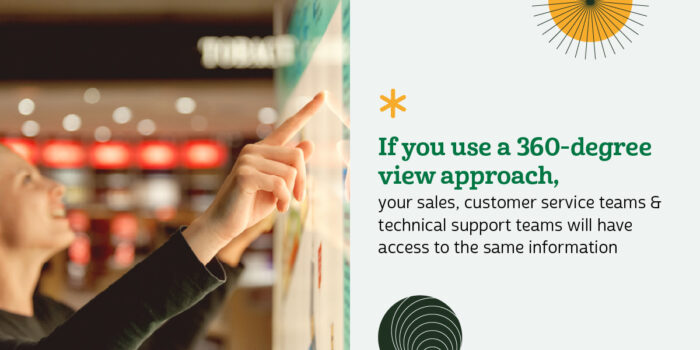
Data-driven insights can help you create a more unique and personalized customer experience. When you know your audience, you can accurately tailor your messaging to their preferences.
Customer insights could help to inform an ad campaign, for instance. They might reveal many of your customers are sports fans, and engage more with ads when they’re in video format, for example. This discovery would lead you to use sports-related videos in your ad campaign. You could even go further and send customers different ads based on their interests. You could, for example, send one group of customers ads featuring athletes and another group ads featuring movie stars.
If you’re a publisher, you could use these insights to customize the content on your website to people’s interests. You could even predict what visitors might like by comparing their attributes to those of other customers.
3. Increased Customer Loyalty
You’ll likely increase customer loyalty by tailoring your interactions based on their preferences and offering them more personalized experiences. Understanding your customers’ preferences enables you to meet their needs without them having to ask, and to interact with them in a way that inspires them to engage.
Personalization, which has a 360-degree view of your customer enables, is key to building customer loyalty. In addition to matching users’ preferences, personalization also helps create a feeling of connection with your brand. Even something as simple as using someone’s first name in an email could help.
This personalization is one aspect of improving customer experience, which strongly influences a customer’s lifetime value.
4. Better Business Planning
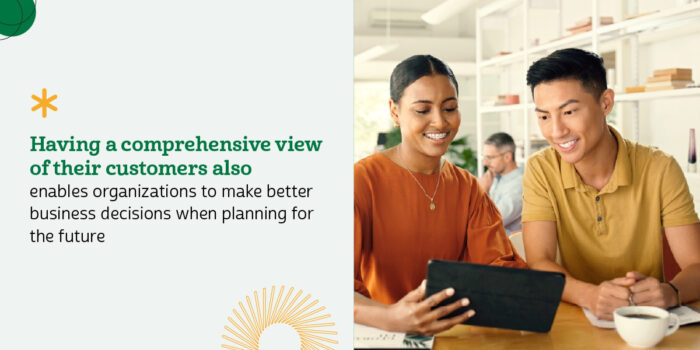
Having a comprehensive view of their customers also enables organizations to make better business decisions when planning for the future. Quality data should back up all major business decisions, and data about your customers is one of the most important kinds of data to have, as your customers sustain your business and enable it to grow.
A 360-degree view of your customers enables better predictive analytics. Predicting future customer behaviors gives you important information on which you can base both short-term and long-term business plans. The predictive analytics insights enabled by your customer data can help inform decisions about everything from where to run your next marketing campaign to where you should build your next warehouse.
5. Reduced Marketing Expenses
A 360-degree model can also help you to reduce your marketing costs and boost the return on investment of your marketing campaigns. The more data you have on your audience, the more accurately you can target your campaigns.
A 360-degree view allows you to target smaller groups of customers, so your adverts reach audiences more likely to convert. Improved targeting saves you money on ineffective campaigns. A larger portion of your audience will convert, improving your marketing campaign’s return on investment (ROI).
Improved campaign insights enable you to convert leads cost-effectively, up-sell and cross-sell customers and reach new audiences.
6. Elevated Collaborations Across Departments
A 360-degree customer view facilitates collaboration and communication across departments. Preventing silos throughout departments and allowing all departments to access a single source of truth on customer data allows them to share information with ease.
The customer service team could communicate challenges with a particular customer to the sales team, for example, allowing the salespeople more time to personalize their pitch. With past and present customer data, your sales, marketing and service teams can align their strategic approaches, resulting in more personalized service, better brand recognition and increased sales.
How to Build a 360-Degree Customer View?
So, how do you go about building a 360-degree view of your customers? In short, customer data is the critical building block for creating a 360 customer view. You need several types to create a complete picture of your customers, and who they are.
Get a 360-Degree View of Your Customers
Along with your data, you need tools to manage it effectively, and use it to bring value to your customers and business. The following four components are essential to building a 360-degree customer view:
1. First-Party Data
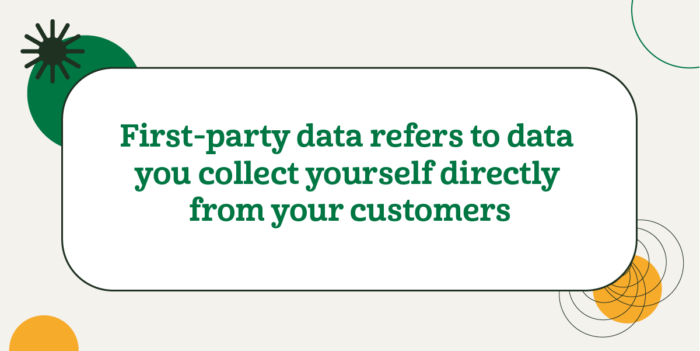
As the name suggests, this is the first level of data you collect directly from your customers. It’s about your existing customers, making it significant for your business. Since it comes straight from your users, it’s also inexpensive to compile.
For a 360-degree view of your customers, you must gather first-party data from a variety of online and offline sources, including websites, social media, ads, your CRM system, email list and subscription forms. The more data you gather, the more complete your picture will be.
You also need to organize your data, determining which information belongs to which customers. Lotame’s Audience Management platform allows you to unify, enrich and target first-party audiences across browsers, devices and platforms. First-party data is the foundation of your 360-degree customer view.
2. Second-Party and Third-Party Data
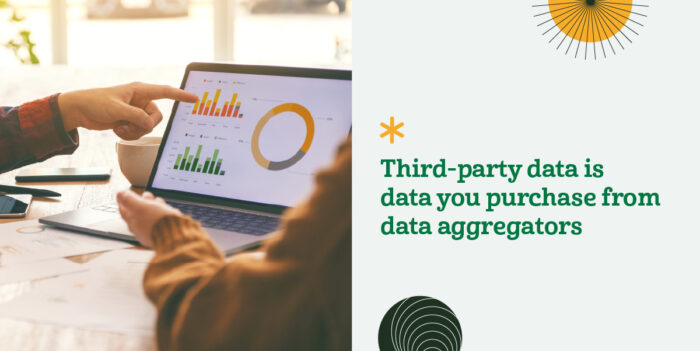
Second and third-party data is another critical component of your 360-degree model. You can collaborate with another brand to obtain second-party data — first-party data from another organization. Third-party data is purchased from aggregators — organizations that collect data from various sources instead of collecting it firsthand.
You can use second and third-party data to augment your first-party data and discover new insights about your audience. You can get this data from a variety of sources, including other companies and data marketplaces.
Lotame’s data collaboration platform, Spherical, offers a data collaboration tool for those looking to tap into the benefits of second-party data. It gives brands, agencies or media owners everything they need to safely combine data with the partner of their choice for actionable customer intelligence, data informed audiences, and identity powered activation.
Lotame Data Exchange is the world’s largest third-party data marketplace providing access to quality data. It gives digital marketers or media owners access to thousands of audience segments, including our proprietary Pre-Packaged, Precision Demographic and Co-Branded Audiences. Our audience segments are also available on more than 55 advertising platforms. The marketplace features more than 5,000 pre-packaged segments, and we can also custom-build segments on request.
Additionally, we can create custom blends of first-, second- and third-party data to help you meet your business’ data needs.
3. Data Analysis

To derive value from your data, you need to analyze it to gain insights you can use to improve your understanding of your audience and how you interact with them. You can analyze your first-party data to learn more about your current customers and augment that with second-party and third-party data to get deeper insights. It’s also crucial to keep your data organized and determine what will help you reach your goals to prevent data overload.
When you begin digging through your first-party data, you’ll notice many of your customers have certain attributes in common. You can organize your audience via this information with market segmentation, which involves splitting your audience into groups based on shared characteristics. For example, you might create one segment for customers who live in the city, one for those in a rural area and one for those living in the suburbs. You can then customize your campaigns for each of these groups.
Finding second-party and third-party data for customers with attributes similar to your current customers helps you learn more about your audience and expand your reach. If you know your customers are mostly middle-aged women living in the U.S., you could purchase data matching those demographics and analyze it to learn about their interests. If you know your audience is into sports, you could purchase an audience segment of sports enthusiasts to learn their demographics.
Expand your audience through Lotame’s predictive modeling capabilities or third-party data exchange, helping you gain better insights into your customers. Using Lotame’s Audience Builder, you can build audiences based on various attributes and test different strategies to see what works best.
Lotame’s lookalike modeling capabilities can help you find new audiences by using predictive and lookalike modeling to build audiences of new customers that are similar to your current customers. This tool can also automatically adjust your targets as your campaigns run to help them perform better.
4. Predictive Analytics
Predictive analytics is a crucial part of creating a 360-degree view of your customers, as it helps you to predict future actions and to adjust your strategies accordingly. Your insights can help you improve the success of your campaigns and drive more conversions.
As you analyze the information you gathered from across the customer journey and various types of audience segments, you’ll start seeing patterns in customer behaviors. By analyzing the attributes of your leads, you can determine which ones make someone most likely to convert. Then, in the future, you can focus your marketing efforts on these individuals.
You can also assess whether leads tend to show more dissatisfaction at any point in the buying journey. You can adjust your process to eliminate the issue if you notice a pattern. If a problem only occurs with certain types of customers, you could automatically adjust your marketing or sales tactics when dealing with these leads. You can conduct similar analyses for many situations.
Lotame Analytics tools make gaining the insights you need to better your business easy. With our Audience Analytics and Campaign Analytics tools, you can learn more about how people interact with their content and the connection between customer attributes and the likelihood of conversion. These insights can help you to develop improved target audiences, enhance campaign performance and improve your content personalization.
Create a Complete 360-Degree Customer View With Lotame
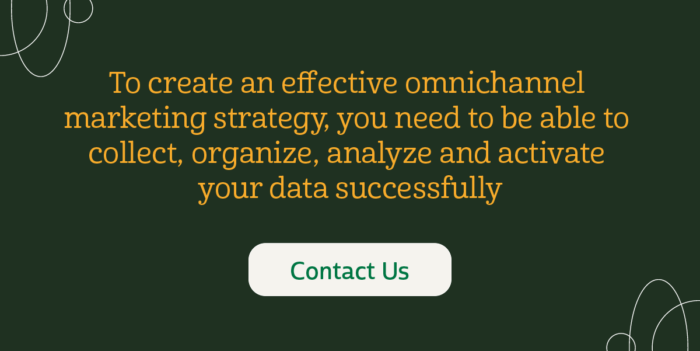
A 360-degree view of customer data is essential to the customer experience. As customer demands change, your business needs to keep up with your current customer expectations, and continue to expand your audiences and client base.
To get a 360-degree view of your customers, you need to collect the right data, organize it, analyze it and use it to inform your campaigns, content and business decisions. Lotame has the tools and expertise to help you. With our innovative tools, you can build unique and accurate audiences by leveraging a combination of first-, second- and third-party data to provide the best possible customer experience.
Learn more about how Lotame’s interoperable, flexible solutions can help you achieve a 360-degree view of your customer, contact us or request a demo today and experience the power of Lotame firsthand.
Get a 360-Degree View of Your Customers